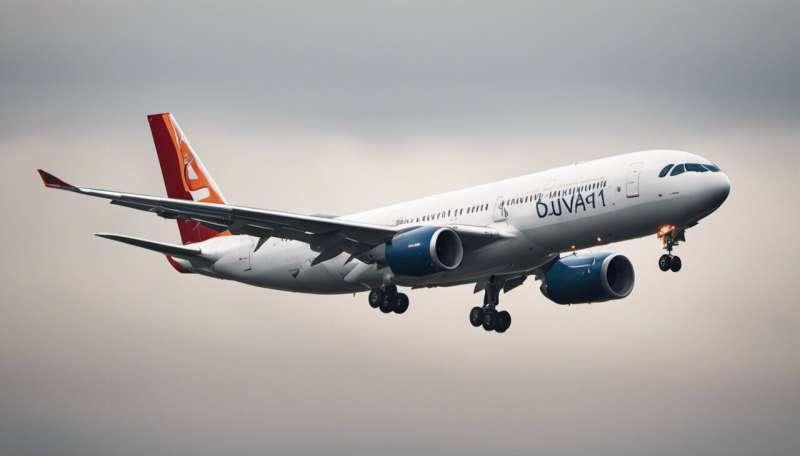Credit: AI-generated image (disclaimer)
Shortly after Air France flight 447 took off from Rio De Janeiro in June 2009, it entered a storm, vanished from air control systems, and crashed into the Atlantic Ocean. It took more than 2 years for the wreckage to be found, along with the information it held about what went wrong. So why don't planes just send out flight recorder data constantly throughout a flight?
"In fact, they could," says Claude Pichavant, executive expert in communication, navigation and surveillance at Airbus. Data streaming is one of two current possibilities for flight data recovery. The choice belongs to airlines when they purchase new fleets, but they are mandated to use at least one of them.
In the Airbus fleet, the most used option is the Deployable Flight Recorder, also known as the "ejectable black box." This device—which contrary to its name, is usually brightly colored—records the final hours of communication from the cockpit, along with a range of aircraft parameters such as speed, altitude, flight path and engine performance. When planes go down, authorities try to find these devices to quickly discover what went wrong, but if the wreckage is lost at sea, the "black boxes"—and the data they hold—are sometimes never recovered.
The technology for planes to transmit this data either straight down to ground networks or via satellites, either continuously throughout a flight or when triggered by an aircraft in distress, exists. But as with all technology, there are trade-offs.
First, there are physical constraints. Transmitting the data consumes power, potentially taking it away from other systems. And when accidents happen, planes often become inverted as they descend. As the data streaming antenna is normally installed in the top of the plane, line-of-sight contact with satellites may be lost, interrupting the signal and squandering the data.
Privacy is another issue: streamed data could be intercepted or used by a third party, or someone posing a security threat. "It can be interesting for the competition to know your parameters, or for people with bad intentions to capture what the pilot is saying or doing," says Pichavant. This means all streamed data must be encrypted, so that only authorized entities can access it.
Then there is the transmission space to consider. Air traffic communication and safety systems are dependent on the availability of radio spectrum. There is a protected spectrum for "safety of flight" data, but outside of this, data transmission could be subject to competition from other transmissions. "Then you are able to lose some information in case of interference. So, this is also a problem," adds Pichavant.
It's possible that more airlines will choose to stream data as costs decrease in the future, Pichavant remarks, particularly with the advent of low-orbit satellites. "You will have more possibility to use these constellations to send your data, and you need less power for this," he explains.
Meanwhile, innovations to modernize Europe's air traffic management system are taking place on the ground. Pichavant worked as part of the EU-funded PJ31 Digits project, which aimed to improve the technology passenger planes use to share trajectory data with ground control.
Issues surrounding data and air traffic management will become increasingly complex in years to come, with increasing numbers of drones, and possibly even air taxis entering the skies. "We are discussing all the new entrants," notes Pichavant. "The idea right now is to try to define what will be the framework for unmanned aircraft system traffic management, to be able to manage all those kinds of vehicles."
You might even be allowed to keep your smartphone on for the whole flight.
Provided by CORDIS
























